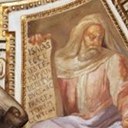0095 Legitimacy through Art in the Rome of Gregory XIII
The Commission to Baldassarre Croce in the Fonseca Chapel of San Giacomo degli Spagnoli
Identifiers (Article)
Identifiers (Files)
Abstract
The article deals with the commission made out by the Portuguese merchant banker António da Fonseca to Baldassarre Croce to decorate his family chapel in the church of San Giacomo degli Spagnoli in Rome, the national church of Castille. Fonseca was an outsider on account of his being Portuguese and of Jewish origin yet chose to have his family interred there in a chapel dedicated to the Resurrection. The choice of the church itself, the commission to Croce, and the Resurrection motif fits into a strategy on his part to seek legitimacy and social capital for himself and his family in order to integrate into Roman society.
Statistics


License

This work is licensed under a Creative Commons Attribution-NonCommercial-NoDerivatives 4.0 International License.



